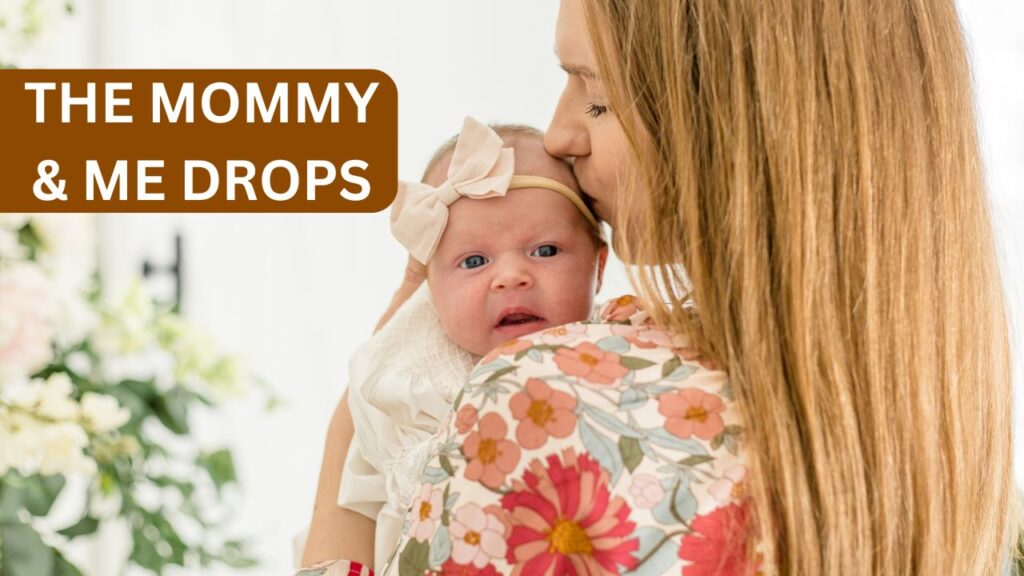Fashion has always been society’s barometer. Mommy & Me fashion over the last few years is one of our favorite (not to mention financially productive) trends. Fashion went sentimental, mixing trend with togetherness and design with domesticity style must have been the price of put-your-soul-into-it sentimentality. It’s not merely a transient whim but an entire movement of culture.

The Mommy & Me Drops
Once upon a time, mommy & me fashion was confined exactly to the cute matching outfits you saw on side lines for Mother’s Day features, picture sessions and holidays. There was, however, a noticeable difference starting in the mid-2010s. So big-box retailers, influencers and designers began to treat these drops as major fashion events.
With the rise of millennial moms and Instagrammable content, coordinating looks have evolved into groups rather than matching outfits. No longer novelty, the items they featured were truly stylish thanks to their clean lines, color coordination and fabrics of such a high quality that adults as well as kids could wear them.
Why Did the Trend Start?
The following elements played a part in the development of this trend:
Social Media Influence: Platforms like Instagram and TikTok created a zone where fashion content could cohabit with home life. Influencer moms and mommy bloggers emerged as the new fashion darlings.
Changing Family Dynamics: Millennial parents liked visual storytelling and shared experiences. Today, wearing similar clothes is a common method to show support.
Brand Strategy: Retailers saw a new market on which they could age-farm conversion with the feedstock of emotional resonance. And mini-me style became a strategic move to expand product lines without having to start from square one.
H&M Conscious Collection
With their eco-friendly assortment of airy linen dresses and matched loungewear, H&M included Mommy & Me. The attraction? Chic, eco-friendly, and visually appealing items for contemporary families.
Gabbana & Dolce
The luxury house’s rich floral arrangements and Mediterranean-inspired prints had moms and daughters opening their wallets. These collections proved that couture can be a family affair, if not an inexpensive one.
Disney x Gap
Leveraging character-adoration and nostalgia, Gap’s Disney-inspired Mommy & Me capsule found early success.Classic sweatshirts, pants and tees made coordination casual yet fashionable.
Amazon Essentials and PatPat
These e-commerce-powerhouse companies took a high-volume, low-cost approach to appeal to the masses, flooding their sites with an endless stream of matching sets in various categories like beachwear and holiday pajamas.
Beyond Simple Correspondence: A Change in Narrative
The Mommy & Me trend is about more than looking the same. Curating memories is the goal. Brands didn’t take long to figure out that emotional storytelling is effective. Real moms and real kids started to appear in ads, replacing models. Family life began to be assimilated into the fashion story not as compromise, but on trend.
High-fashion editorials in marketing playbooks began to be supplanted by photo carousels of coordinated family outfits walking on a beach, baking at home or dancing under the sun. It humanized fashion and made it attainable but aspirational.
Celebrity Support: Increasing the Allure
Hollywood noticed. Beyoncé, Kim Kardashian, Blake Lively, and other celebrities started sharing Mommy & Me photos of themselves with their daughters. Coordinated streetwear ensembles, red carpet minis, and matching bikinis swiftly became viral fashion trends.
When Kylie Jenner posted photos in matching dresses with daughter Stormi, it sparked not just likes but demand. Fast-fashion versions appeared on internet stores in a matter of days.
The Emotional Economy
The fashion industry has known for ages that shoppers are driven by emotion. Mommy & Me capsules are doubly advantageous in that they capitalize on parental sentiment while delivering a visually appealing product which can be shared.
Lift in Cart Value: More and more parents were buying for themselves, as well as their kids.
Repeat customers: “The sentimental value, reminded them of us and they would make a purchase again especially in special times or” around the holidays.
Limited Edition = FOMO: Brands used drop culture in order to create urgency. Capsules were marketed as “limited,” often sold out quickly, and excited customers to the point where they came back again.
What’s Up Next for Fashion for Mommy & Me?
Despite showing no indications of abating, the pattern is changing in several significant ways:
- Prioritize Functionality: Consider athleisure and travel attire that complements each other and has useful features like pockets, stain resistance, or UV protection.
- Adaptability First: In this market, ethical sourcing, repurposed textiles, and organic cotton are becoming more popular.
- Beyond Moms: You can anticipate “Family Drops” that are inclusive of people of various sexes, ages, and sizes, without being constrained by the term “Mommy.”
FAQs On The Mommy & Me Drops
In the mid-decade, it experienced a bump from influencer culture and social media.
It just creates beautiful memories and strengthens emotional connections.
No, it’s evolving to involve all kinds of families: fathers and sons.
A lot of brands do offer inclusive sizing choices these days, after all.
Yes, mothers and boys can have matching sets too.
Prominent examples include, but are not limited to Dolce & Gabbana, PatPat, H&M and Gap.
